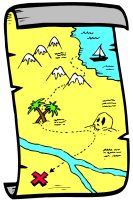
Worksheets and No Prep Teaching Resources
Reading Comprehension Worksheets
Geography

Geography
 Worksheets and No Prep Teaching Resources Reading Comprehension Worksheets Geography |
 Geography |
| edHelper's suggested reading level: | grade 5 | |
| Flesch-Kincaid grade level: | 8.42 |
|
Science of Location
By Trista L. Pollard |

|
 1 Early explorers knew there was more land beyond their countries' shores. That is why they navigated through unknown seas to reach these lands. Thanks to their need for adventure, our first maps were made. The science of geography was also born.
1 Early explorers knew there was more land beyond their countries' shores. That is why they navigated through unknown seas to reach these lands. Thanks to their need for adventure, our first maps were made. The science of geography was also born. |
Create Weekly Reading Books
Prepare for an entire week at once! |
| Leave your feedback on Science of Location (use this link if you found an error in the story) |
 |
Geography
|